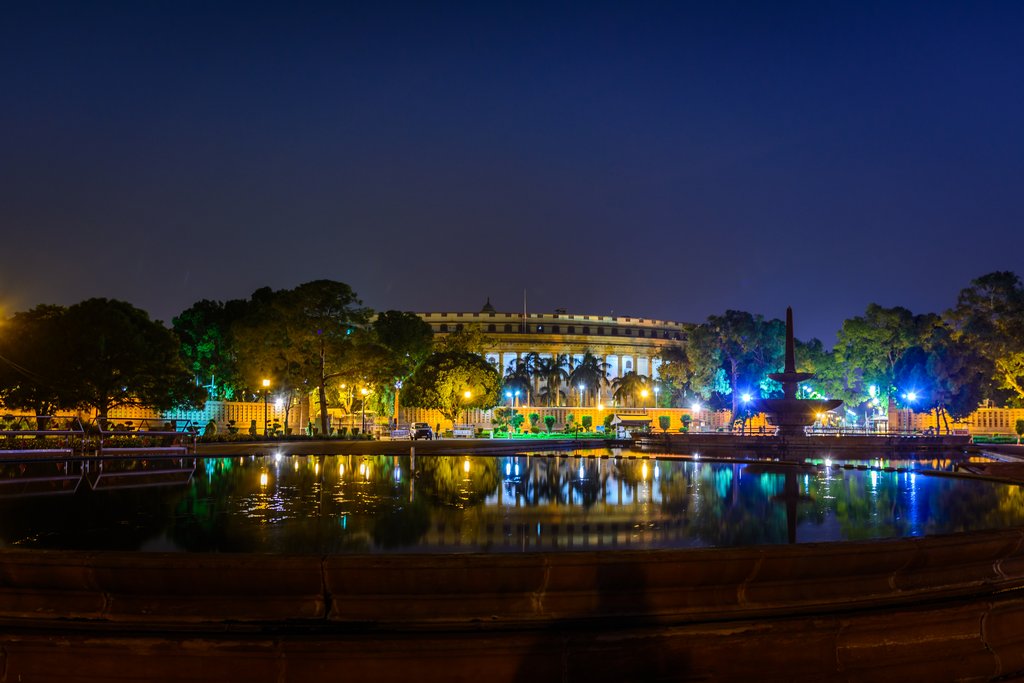Opinions - 25.01.2023 - 14:29
Man, Myth, Modi: How Prime Minister Narendra Modi divides India
He is revered by his followers like a saint. But the Hindu nationalist is also polarising. Nevertheless, the West is counting on him in the battle of the ideologies. And rightly so? An opinion piece by Manali Kumar.
Source: HSG Newsroom

He is revered by his followers like a saint. But the Hindu nationalist is also polarising. Nevertheless, the West is counting on him in the battle of the ideologies. And rightly so? An opinion piece by Manali Kumar.
The West is increasingly relying on India – the world’s largest democracy which has been rising since the 1990s – in its systemic struggle with authoritarian Chin and Russia. On the one hand, the country has become a growth engine of the global economy since initiating liberalizing reforms in 1991. Due to its size, India is a key player in global trade and climate negotiations. On the other hand, social and political problems especially over the past eight years are a cause for concern.
The next parliamentary elections are scheduled for summer 2024, and Prime Minister Narendra Modi is already in campaign mode. If his right-wing conservative, Hindu nationalist Bharatiya Janata Party (BJP) wins another victory, Modi could return for a third-term.
The Man
Before becoming India’s prime minister in 2014, Modi was infamous for his administration’s complicity in the 2002 Gujarat riots during his tenure as chief minister. The riots, which saw three days of brutal violence leaving hundreds dead and injured, has been characterized as a premeditated pogrom by scholars who have studied the event. Modi was banned from entering the US because of his alleged involvement in these riots until he became prime minister. Although some of his close associates were convicted and imprisoned for their involvement in the riots, Modi himself was found not guilty due to lack of evidence.
In the following years, Modi’s political discourse emphasized development and industry-friendly policies. In the run-up to the 2014 general elections, he avoided the BJP’s Hindu nationalist agenda, and presented himself as an economic reformer and adept administrator. The party’s manifesto of combating widespread corruption, increasing administrative accountability, and promises of ‘smart governance’ resonated with the electorate.
In the last eight years, a personality cult has developed around Modi. Huge billboards with his image are everywhere in India, and he is given credit for everything – even India’s Covid vaccination certificate came with Modi’s picture. And yet, he seems to be a profoundly insecure leader unwilling to be held accountable – in his nine years as prime minister, he is yet to answer questions from reporters in a press conference.
The Myth
The myth of Modi seems to grow larger each year. Initially, the narrative surrounding Modi focused on his past as a humble tea seller at a railway station born in a poor family. The symbolism of a tea seller rising to become the prime minister – and his promises of delivering bullet trains and millions of jobs captured – the imaginations of India’s increasingly aspirational electorate.
Once in office, Modi was presented as a tireless and selfless leader who works 18 hours a day and had not taken a single holiday in 20 years. With the pandemic came his next avatar – he emerged as a sage with long hair and longer beard leading ‘vishwa’ (world) guru India. His sycophants have already declared him “father of new India”, placing him on the same level as father of the nation Mahatma Gandhi who was instrumental in successfully employing nonviolent resistance to end British colonial rule over India.
And yet, while Modi has sought to create a lofty rhetoric around India, emphasizing the country’s civilizational and moral greatness, none of these ideas are new. The notion of self-reliance at the center of his ‘Aatmanirbhar Bharat Abhiyan’ (self-reliant India campaign) has been a key aspiration of successive Indian governments since Independence. Even Modi’s theme for India’s G20 presidency this year – vasudhaiva kutumbakam (the world is one family) – was emphasized as the core guiding value of Indian foreign policy by former prime minister India Gandhi in her speech the Non-Aligned Movement’s Lusaka Summit in 1970.
The Machine
What is different today is the reach of social media, and Modi and his party’s ability to spend millions on PR campaigns and political ads. His party’s IT Cell controls one of the biggest social media machines in the world, disseminating propaganda, misinformation, and often cyber bullying. Whatsapp and Twitter are the perfect tools for spreading Modi’s bombastic speeches and catchy slogans.
Another victory for the BJP next year and a third-term in office for Modi are very likely. And so, Modi will come one step closer to matching Jawaharlal Nehru’s legacy, independent India’s first prime minister who served four terms. Unfortunately, Modi’s legacy will also include an internally weakened India. An idealistic freedom fighter, Nehru strove to build a strong and united secular democratic country. While Modi has portrayed himself as a muscular leader, religious violence and censorship in the public sphere have increased and healthy debate in parliament has decreased. Today, India is making a place for itself at the global high table. But with divisions in Indian society becoming wider and deeper, will the country be able to face the challenges of the coming years?
This article first appeared in German in the Tagesspiegel of 23.01.2023.
Dr Manali Kumar is a Postdoctoral Research Fellow and Lecturer at the University of St.Gallen and Editor-in-Chief at 9DASHLINE.
Image: Adobe Stock / Sumit